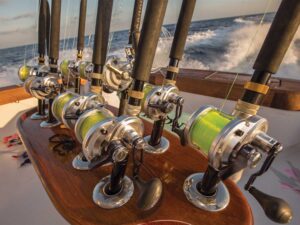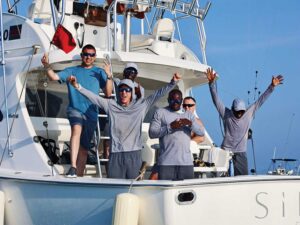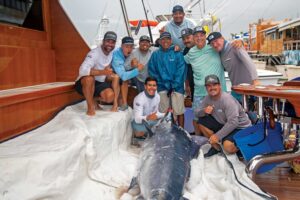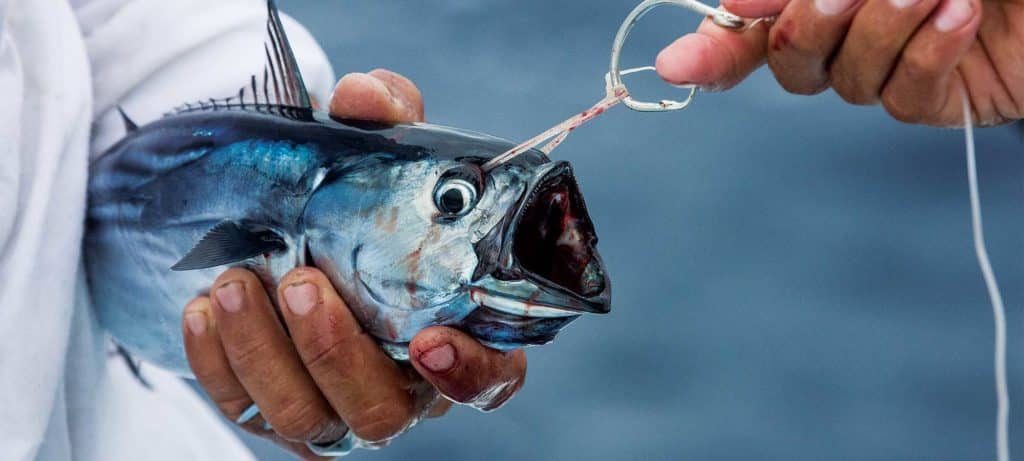
Between intense recreational-fishing pressure, big-money tournaments and commercial-longline bycatch, the East Coast white marlin fishery was near collapse in 2000. There was talk of adding white marlin to the endangered species list because less than 20 percent of the spawning biomass was available to sustain the species. Instead of doing that, Atlantic federal marine fisheries councils issued a ruling in 2008 that required the use of circle hooks in tournaments for live or dead natural baits or bait/lure combinations. There still is no rule requiring circle hooks be used outside of Atlantic billfish tournaments — or on the West Coast — but the sentiment for such measures is positive.
The Beginning
In 1998, circle hooks exploded on the American sport-fishing scene with Capt. Ron Hamlin’s declaration that he would use nothing but circle hooks when fishing with bait. The announcement came as he was accepting The Billfish Foundation’s annual release award for the most Pacific sailfish in a single season (546 sails caught on J hooks in 1997). Tired of seeing gut-hooked billfish gushing blood, that night he denounced the J hooks that had brought him so much success. What the spectators did not realize was that Hamlin had experienced a catch-per-unit effort rate of 65 percent or better for circle hooks on sailfish in Guatemala, compared to 50 percent with J hooks. From his perspective, it was a no-brainer that would tremendously benefit the fishery.
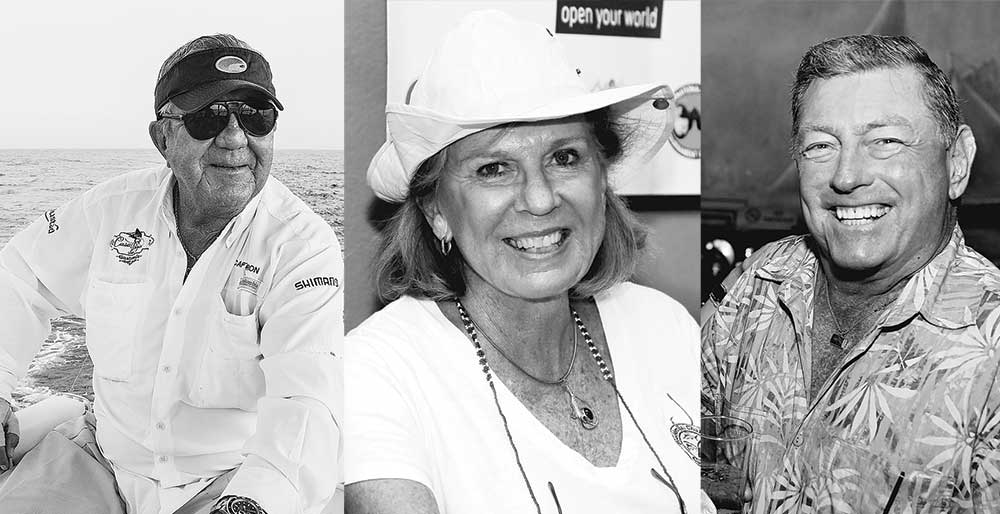
His employer, Tim Choate, had mandated the use of circle hooks by all five of his Artmarina-owned charter boats even before science had proved that billfish survival rates greatly increase with circle hooks. In his speech that night, Hamlin acknowledged Capt. Peter B. Wright and angler Skip Walton for bringing circle hooks to Guatemala after first using them in the giant bluefin tuna fishery off North Carolina.
A charter captain, and owner of Red Drum Tackle in Hatteras, North Carolina, Capt. Bob Eakes had a lot to do with pioneering the area’s bluefin tuna fishery, bringing in Wright and marine scientists such as Dr. Eric Prince.
Prince, now retired from his post as head of the NOAA Fisheries Service Southeast Fisheries Science Center in Miami says it all began in 1995, approximately two years before they started tagging bluefin tuna with implantable, archival and pop-up satellite tags. “The big question was how to minimize the damage and stress of capture so the tuna would survive the surgical implantation of the oversize tags, which then cost about $4,500, so survival was essential,” he says.
Wright and his mate, Scott Levin, suggested a plan to bring the fish aboard through the tuna door and insert a saltwater washdown hose in the tuna’s mouth to oxygenate the fish, along with using a cloth to cover the eyes and body.
“This helped eliminate stress from handling,” Prince relates. But it was the circle hook that Eakes first suggested that eliminated gut hooking, ensuring the long-term health of the fish. “On our fishing trips, every tuna caught on circle hooks was hooked in the hinge of the jaw. Looking at it with a little biological insight, I could see the benefits not just for endangered bluefin tunas, but also to reduce gut-hooking sailfish.”
“Sailfish caught on J hooks are 21 times more likely to suffer hook-related bleeding — and possible death — than fish caught on circle hooks.”
After expressing those insights to Wright, Prince shared them with Choate, who suggested a fishing trip out of Guatemala, where catch rates exceed 40 sailfish per day, to provide a suitable test. The success of that expedition led to a scientific study by Prince in March and May of 1999.
Dead-bait trolling off Iztapa, Guatemala, showed conclusively that circle hooks produce more fish that are released without evidence of bleeding. Out of 461 sailfish bites, they hooked 360. Using an equal number of J hooks and circle hooks, 125 were caught and released on J hooks versus 235 on circle hooks. Out of those 235 releases, only 14 sailfish showed any signs of bleeding, six of which were deemed severe. Of the J-hook-caught fish, 71 had bleeding, 32 of which were deemed severe. The conclusion? Sailfish caught on J hooks are 21 times more likely to suffer hook-related bleeding — and possible death — than fish caught on circle hooks. Furthermore, circle hooks had a higher hookup percentage. Follow-up studies all came to the same conclusion: Significant conservation benefits can be realized in dead- and live-bait fisheries for billfish and tuna by simply changing the terminal tackle from J hooks to circle hooks.
“The simplicity [of one change] really touched a chord,” Prince says.
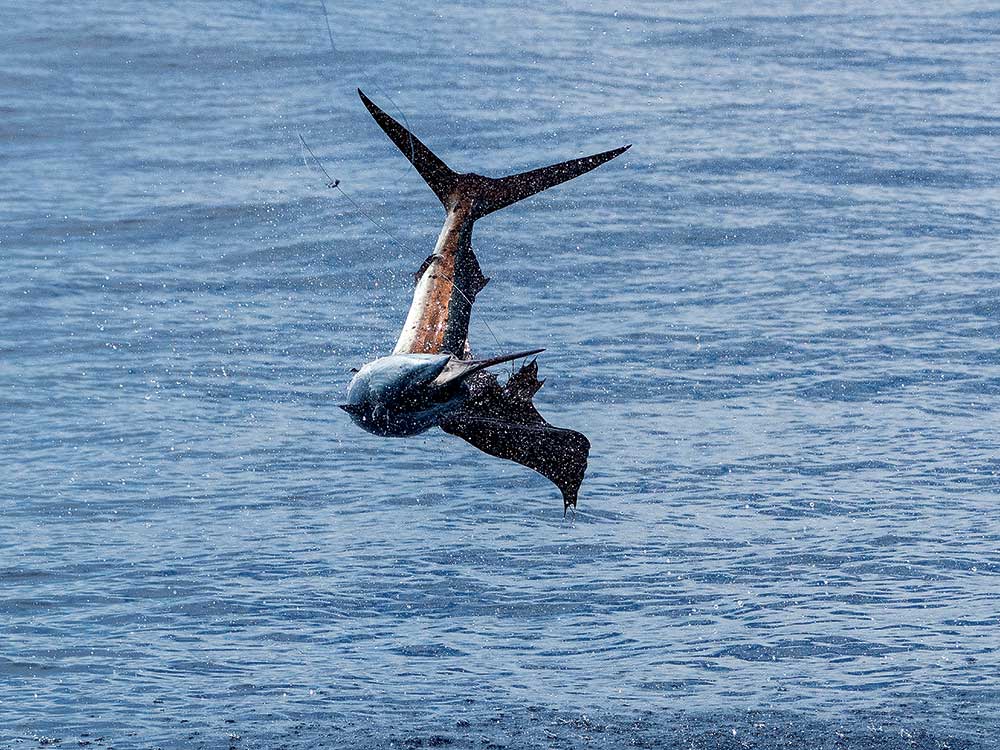
Central America Leads the Way
Like a messiah spreading the gospel, Hamlin broadcast the success of circle hooks to every influential angler he knew. In Joan Vernon, he found a disciple. Since the year 2000, she has personally caught more than 2,200 billfish — all on circle hooks.
“Hamlin explained he had a new hook he wanted me to try,” she recalls. “At first, I was a little skeptical about using circle hooks with the 8- and 12-pound-test tackle I used for sailfish, but I had no trouble hooking them. Every fish was hooked right where Hamlin predicted: in the hinge of the jaw. I was convinced, but getting everyone else on board would be a challenge.”
Vernon is also the executive director of the Presidential Challenge of Central America tournament series. Founded in 1996, the tournaments were originally held in Panama, Costa Rica, Venezuela and Guatemala (now also in Aruba for the past decade). They are fun events, but at their core they are meant to ensure the continued abundance of healthy billfish populations throughout Central America and the Caribbean through research and education. At the 1998 Sport Fishing Economic Conference of Central America — held for scientists, resort and charter operators and politicians — she floated the idea of circle hooks as a tool in reducing billfish mortality.
Putting her money where her mouth is, Vernon announced the 1999 Presidential Challenge series would become the world’s first all-circle hook release tournament.
“I had no idea if the anglers would go for it, but there was no opposition,” she says. A few years later, Costa Rica and Guatemala declared circle hooks mandatory for recreational billfish caught in their territorial waters.
“By 2005, virtually every tournament in Central America had gone to circle hooks,” she adds. “And in countries with no recreational circle-hook laws, they were mandated by the local resorts and lodges in these fishing destinations.”
Vernon also helped found the Yamaha Contender Miami Sportfish Tournament — previously known as the Miami Billfish Tournament — and was its executive director in 1982.
“The whole premise was to raise funds for conservation and education, but committee members were afraid of losing participation if we went to circle hooks,” explains longtime tournament committee member Capt. Bouncer Smith. Despite Prince’s convincing research that circle hooks produced better hookup rates while substantially reducing mortality, the others on the board were resistant. “Finally it was suggested we ease into circle hooks by creating a separate division.
Vernon refused. “‘It’s a complete rule change, or nothing,’ she said at the time, making it the first tournament in the United States to require the use of circle hooks,” Smith relates.
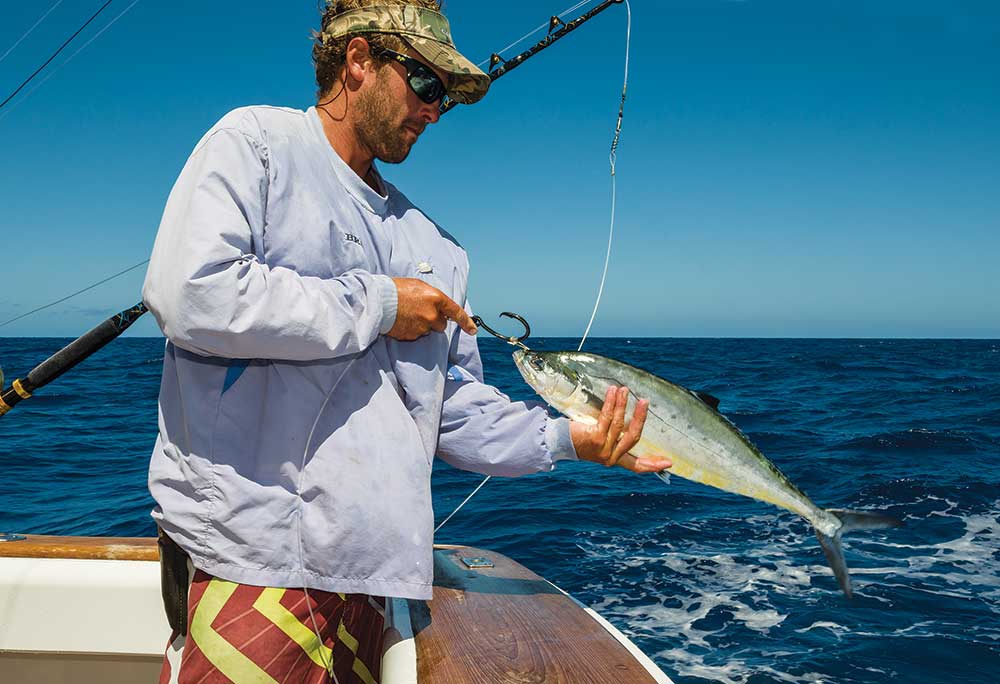
Bridling and Larger Hooks
Smith first joined the circle-hook revolution after hearing an impassioned talk by Hamlin and Choate at the Miami Rod and Reel Club in 1998. Experimenting first with 5/0 Eagle Claw circle hooks that matched the size of the J hooks he used for sailfishing, he was discouraged.
“I lost two sailfish in a row on them, so I went back to my J hooks,” Smith says. “Months later, I caught a white marlin on a J hook that bled to death. It was then I recalled Hamlin’s speech at the fishing club. So, I upgraded the size of the circle hooks to a wide-gap 7/0 and gave them another try. I started having immediate success. Larger-size hooks were the answer.”
Twenty years later he’s still having success, having gone from using 7/0 Eagle Claws to 6/0 VMC circle hooks for sailfish and other species.
“I’ve found the more exposed the hook is, the better the hookup percentage,” adds Smith, who primarily fishes bridled baits with non-offset circle hooks. Another refinement is using slightly rounder rubber bands when rigging his baits. “They solved the problems I was having with common rubber hair bands that cut into the baits.”
Capt. Bobby Brown first used circle hooks for pitching baits to marlin well before it became the norm. In 1996, he was working for Fonda and Wayne Huizenga of Fort Lauderdale, Florida, teaching them the pitch-bait technique with a favorite blue marlin bait — fresh squid — when he encountered a problem. “The squid was wrapping around the J hooks, so I decided to try circle hooks. On the first cast we caught a blue marlin,” he says.
After a month of marlin success, he tried trolling for sailfish with circle hooks, but the only hooks available at the time were made of heavy wire, and in sizes too large for sailfish. “The fish were coming to the bait and fading away,” he explains. He had all but given up on circle hooks for smaller billfish when Eagle Claw and The Billfish Foundation launched a lighter wire hook that became an instant hit.
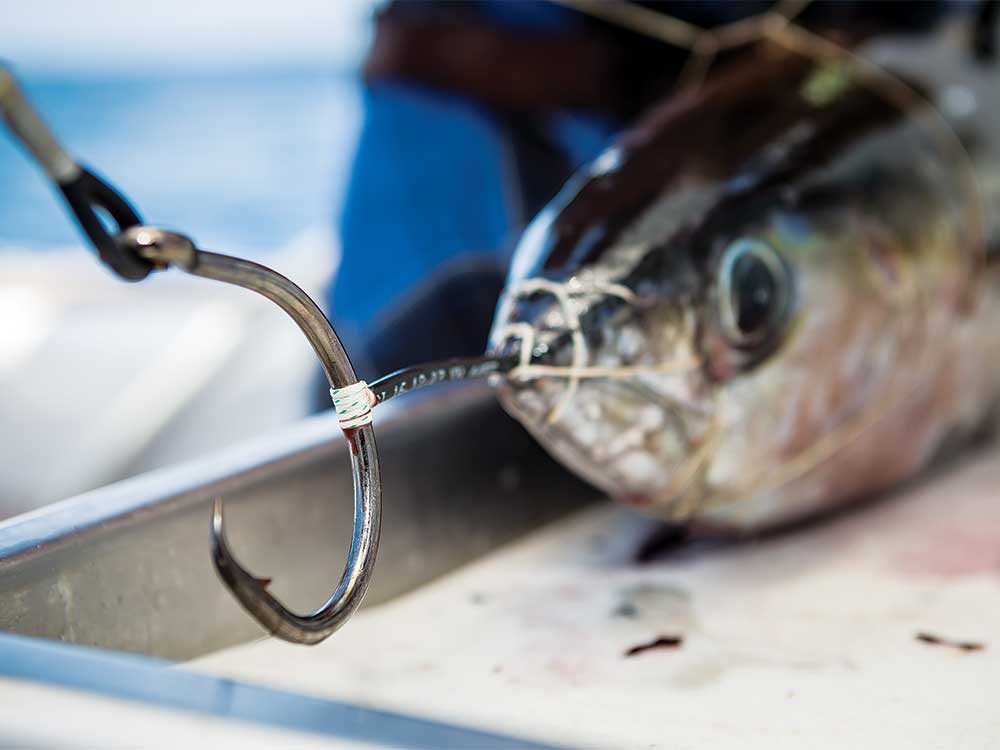
East vs. West
In the early 1990s, long-range fishermen out of San Diego began experimenting with circle hooks while chunking for southern bluefin tuna. Using small-diameter fluorocarbon leaders and circle hooks with live sardines, the catch rates skyrocketed. Not only were the hooks stronger for their size, the bait swam more naturally. By using circle hooks that tend to lodge in the hinge of the jaw, they also solved the problems they’d had with fish chafing the light leaders.
Since then, circle hooks have become standard equipment, says well-known Southern California angler Ben Secrest. “Circle hooks are like a mousetrap for bluefins; once they latch on, they don’t come off,” he reports. These days, he fishes skipping Yummee flying fish and bridled natural baits with Owner 11/0 circle hooks — straight from the rigger or from a kite stabilized with a helium balloon. “I have had the best results with larger-size hooks, and my hookup ratio is running 20 percent better with circle hooks.”
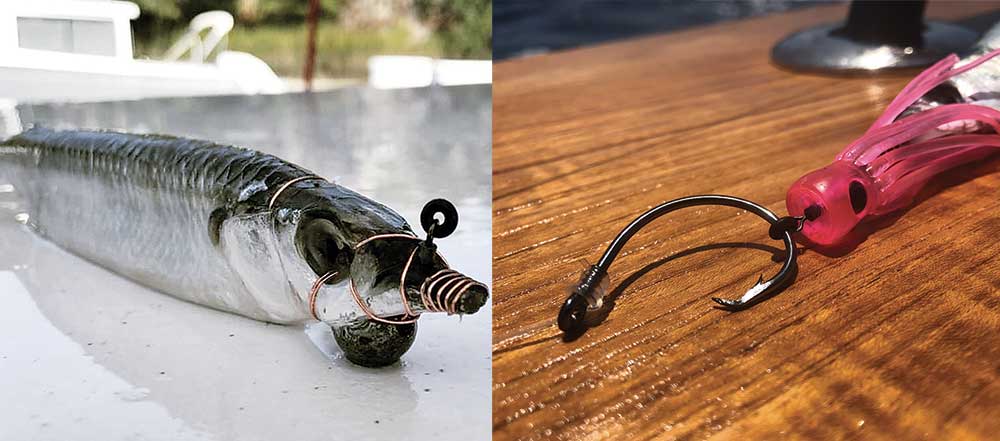
Rigging Techniques Vary
Capt. Kyle Francis of Jensen Beach, Florida, has been fishing circle hooks since he was 15 and has complete confidence in them. Francis — who regularly works the Costa Rica, Florida and Bahamas billfish circuit — says there have been innovations like the rubber O-ring for ease in bridling the hooks to the bait. He prefers a small barrel swivel though. “The O-rings impede the natural movement of the bait,” he explains.
When rigging combination baits such as a chugger or Ilander, he is more open. “With the Ilander, I position the bait with the hook crimped down tight to the lure. With a chugger-and-bait combination, I use one size larger hook. Instead of a 7/0, I’ll go with an 8/0 or 9/0 and add a swivel connected by copper wire with the bill going up into the chugger. It may be simple but it works great,” he explains.
Creating a streamlined circle-hook rig — with the maneuverability of a barrel swivel and ease of rigging with an O-ring — was the concept behind James Turner’s invention of the Ringer Swivel.
Read Next: How to Capitalize on a Missed Bite
The patent-pending rig came out in May 2018, and is available from many professional tackle shops and catalogs.
“It combines the best features of both,” says Turner, who is also a professional mate. “It’s well-known that ballyhoo attached with barrel swivels produce a better hookup ratio than a fixed hook positioned in an O-ring. Ringer Swivels solve the shortcomings: no more sizing the hooks to the barrel swivels and ease of bait switching. It makes the circle-hook rig more foolproof to use.”
In an interview before his death in 2018, Hamlin recalled all the sailfish he’d caught in his long career: “Sure, we released all our fish caught on J hooks, but in my heart, I knew a lot of them weren’t going to make it because they were gut-hooked,” he said. “Circle hooks stopped that. It’s been a win-win situation ever since. Good for the fishermen who, instead of catching 40 or 50 percent of the fish they hook, are now catching 70 percent or more. But most important, it’s great for the fish, which can now truly live to fight another day.”

By the Numbers: A Case Study
There has been a significant increase in white marlin catch rates off the U.S. Atlantic coast since 2008, when the circle-hook rule went into effect, according to a case study by Dr. John Graves, chancellor professor of marine science at the Virginia Institute of Marine Science, College of William and Mary. That increase is also reflected in catch-and-release rates of white marlin by the U.S. pelagic longline fleet, which switched from J hooks to circle hooks around the same time the release of billfish bycatch was mandated, along with additional gear restrictions.
Like sailfish and giant tuna, white marlin continue to benefit from being caught on circle hooks. Studies by Graves and his associates have found that approximately 65 percent of fish caught and released on J hooks survived after release, and that 35 percent of them die within the first 10 days. Compare that with less than 2 percent mortality by a similar number of fish caught on circle hooks.
Do the math: U.S. white marlin mortality caught by recreational anglers and commercial fisheries using J hooks was trending toward catastrophe before the switch to circle hooks.
“In a typical year, more than 10,000 white marlin are released off the U.S. coast,” Graves says. “At 35 percent mortality with J hooks, there was almost 80 metric tons of cryptic mortality based on the average weight of a white marlin at 50 pounds. That is huge if you consider that throughout their range in the Atlantic Ocean, the current total allowable catch for white marlin is 400 metric tons.” This means there was a lot of extra mortality that scientists weren’t accounting for, and it was happening right off our coast.
Now that J hooks are no longer contributing to white marlin fatalities, the fishery looks to be headed in a positive direction.
“We won’t know for sure what the status of the stock throughout the Atlantic is until the International Commission for the Conservation of Atlantic Tunas does its stock assessment in 2019,” Graves says, “but it would seem that by changing out J hooks for circle hooks in tournaments and by the U.S. commercial-longline fishery, it’s having a beneficial response locally.” He continues to say he believes the increase in tournament catch rates suggest that reducing mortality by using circle hooks has had a major impact, although we can’t count out Mother Nature producing conditions that favor good recruitment.
